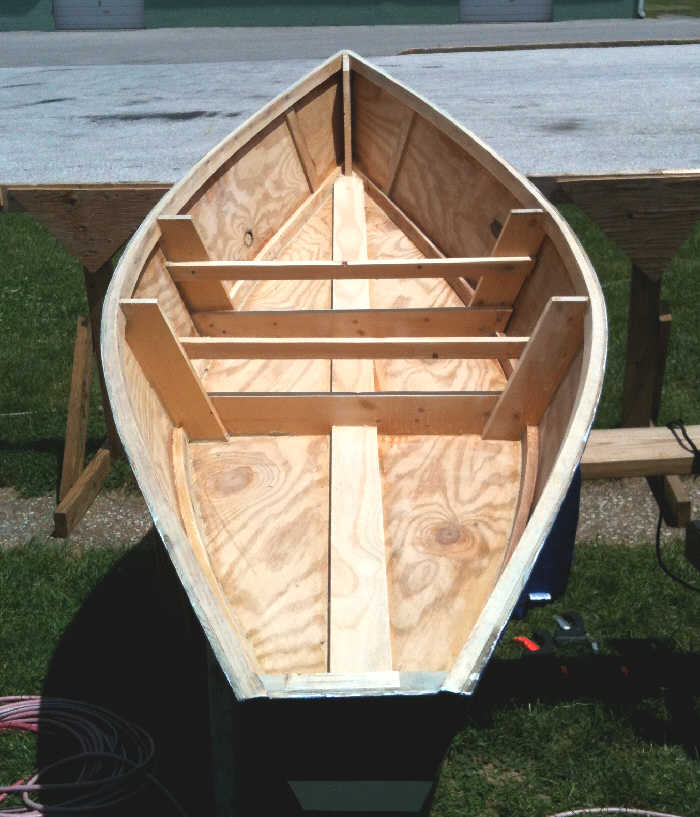How to Build a Durable Plywood Boat with Simple Plans

Beyond the Plans: Unconventional Approaches to Plywood Boatbuilding
"How to Build a Durable Plywood Boat with Simple Plans" â€" the title itself evokes images of straightforward construction. But what if we looked beyond the simple plans? This article dives into unconventional aspects of plywood boatbuilding, exploring rarely discussed considerations and innovative solutions for hobbyists, professionals, and educators alike.
Q&A: Tackling the Unforeseen in Plywood Boat Construction
Beyond Epoxy: Exploring Alternative Adhesives
Q: Epoxy is the standard, but are there viable alternatives for bonding plywood in marine environments?
A: While epoxy reigns supreme for its strength and water resistance, let's explore alternatives. West System epoxy, a popular choice, boasts excellent performance. However, research into polyurethane adhesives shows promising results in certain applications. Recent studies (e.g., publications from the International Journal of Adhesion and Adhesives) indicate that certain polyurethane formulations exhibit comparable strength to epoxy, especially when coupled with advanced surface preparation techniques. The cost difference can be significant, making this a valuable area for cost-conscious builders. However, thorough testing and understanding the specific properties of the chosen adhesive are crucial.
Sustainable Solutions: Eco-Friendly Plywood and Finishes
Q: How can we minimize the environmental impact of our plywood boat projects?
A: The environmental footprint of boatbuilding is substantial. Choosing sustainably sourced plywood certified by organizations like the Forest Stewardship Council (FSC) is a vital first step. Furthermore, exploring alternatives to traditional marine varnish, such as plant-based oils and water-based polyurethane, reduces volatile organic compound (VOC) emissions. While performance may differ slightly, the environmental benefits are significant. Data from organizations like the Environmental Protection Agency (EPA) can help you compare the environmental impact of different finishes.
The Unsung Hero: Plywood Selection and Grain Orientation
Q: Is all marine-grade plywood created equal? How much does grain orientation really matter?
A: Marine-grade plywood comes in various grades, each with different characteristics. Understanding the specific needs of your boat design â€" hull strength vs. interior paneling â€" allows you to optimize your plywood selection, potentially saving both weight and cost. Furthermore, careful consideration of plywood grain orientation is crucial for maximizing strength in high-stress areas. Incorrect orientation can lead to premature failure, a fact often overlooked in simple plans. Advanced resources like the "Boatbuilding: A Complete Handbook" by David Pascoe offer detailed insights into these critical details.
Real-World Lessons: Tales from the Boat Yard
I once worked with a builder who, despite using standard plans, encountered catastrophic hull failure due to improper bonding of the plywood sheets. He had unknowingly used a substandard epoxy, resulting in delamination after only a few months of use. This serves as a powerful reminder that the materials and techniques, not just the plans themselves, are paramount to a durable vessel. This story underscores the need for meticulous material selection and attention to detail, surpassing the often simplified instructions in basic plans.
Beyond the Blueprint: Innovation in Plywood Boat Design
Simple plans are a starting point, not an end. Consider incorporating modern design techniques such as computational fluid dynamics (CFD) software to optimize hull shape for better efficiency and stability. Experiment with alternative fastening methods, perhaps exploring composite materials or advanced joinery techniques for increased strength and reduced weight. These innovative approaches, though more demanding, can lead to truly exceptional vessels.
Conclusion: While "How to Build a Durable Plywood Boat with Simple Plans" offers a solid foundation, true mastery lies in understanding the nuances beyond the blueprint. By embracing innovation and a deep understanding of materials and techniques, we can create stronger, more sustainable, and ultimately more rewarding plywood boats.
0 comments:
Post a Comment
Note: Only a member of this blog may post a comment.